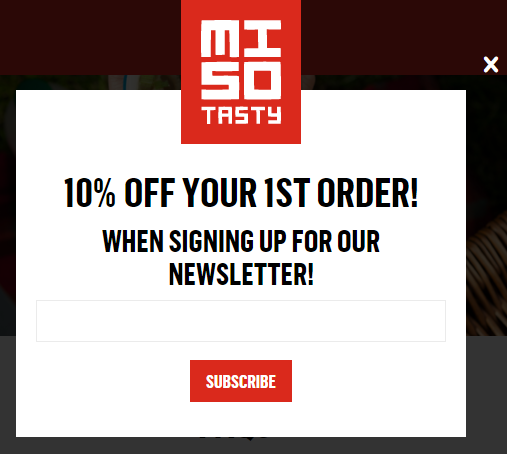Think email address first, sales second
In retail we spend a lot of time, money, and effort attracting people to our websites (and our stores, and our cold mailings) to try and get them to buy. Getting the first purchase shouldn’t be the aim of the majority of our ‘cold’ marketing – our aim should be to get their email address.
Why? Well, it’s easier to get an email address than it is to get a purchase. Once you have their email you can start a conversation with them to get them ready to buy. The reason it’s easier to get an email address than a purchase is because there’s less risk in it for the consumer, and the less risk there is the more likely people are to do it.
Of course once we have their email address they still see just as much risk in making a purchase so we have to reduce the risk they perceive. Reducing this risk is all about building TRUST with the consumer. The best way to build up the trust between you and the consumer (and get them to make that first purchase) is to create a welcome sequence.
I recently interviewed Nathan Rothstein, the co-founder of Project Repat (an American eCommerce business who turn people’s old tshirts into blankets) in his words “it’s all about collecting the emails” – that’s the strategy they’ve used to turn over $4m in 2015. He was kind enough to share his stats, and they get 8% of their site visitors to sign up to their emails, and 25% of them will go onto buy. That’s an extra 2 percentage points of conversions from their website traffic.
Here’s Nathan’s exit pop up:

How do you create a good email sign up?
I recently released a podcast outlining 20 ways to increase your email sign ups, but here I only have space to bring you tip 11. Which is – have a pop up!
It still amazes me how many businesses don’t have a pop up asking for an email address on their website. (I’m using the term ‘pop up’ in the most generic sense, yours might an interstitial, a lightbox, an overlay – it doesn’t matter what you call it, what matters is that it’s working.) When I turned on the pop up on eCommerceMasterPlan.com it increased our signup rate from a regular 0.X% to a steady 2%+ (and it was an ugly annoying popup!) with a little tweaking and testing we’ve now got it to 4%+ and we’re still working on getting it higher.
You definitely have to test your popup email sign up so here’s the key things you should be testing:
- Testing the trigger
It can be the first thing someone sees on your website (an ‘entry pop up’) or the last thing they see when they go to leave (an ‘exit pop up’).
Alternatively you might trigger it after they’ve looked at a certain number of pages, or when they scroll a certain distance down the page. - Testing the format
A pop up can appear in the centre of the screen or as a strip along the bottom or top of the visitors screen.
Most people put them right in the middle of the screen, but for some the bottom/top of the page can work better. - Test the incentive
I always recommend you start without a promotional offer. Just offer up the great information the visitor’s going to get by subscribing. This will give you a benchmark to test any promotions against, which then means you can work out if the costs of the promotions are worth it.
Here’s a nice straightforward no-promotional-offer pop up from Lick My Dip, with a great button call to action:

Miso Tasty’s pop up strategy is to offer a discount on the first order to reduce the risk for the consumer:

Create your perfect pop up recipe
Once you’ve tested the key elements you can move on to create the perfect pop up recipe for your website. A mixture of pop up types, offering different incentives at different points, and that appear to different customers at different times. The optimisation potential is endless – so just make sure you stop when the incremental improvements aren’t worth your effort.
Maxwell Scott Bags have evolved their pop up to include social media connection call to actions as well as gather the email address.

Your Welcome Sequence
Once you’ve got the email address, the focus switches to getting the first order. That’s achieved by building the consumer’s trust in your business using a welcome sequence. A good welcome sequence will:
- Deliver whatever you promised when they signed up (breaking promises is a great way to destroy trust)
- Tell the consumer about your business, to make the consumer feel closer to your business, and thus trust you enough to place that first order.
What you put into the welcome sequence will change from business to business. However most will include an “about us” email, explaining the vision behind the business and introducing the people as well. For the rest, put yourself in the shoes of your future customers – what you want to know before committing to a purchase? Or even look at what common questions are asked of your customer service team. That might mean you should include how the products are made, or how to order on the site (important if you are selling personalised products, or difficult to order items like mattresses etc).
For some examples of welcome sequences in retail take a look at Shoes of Prey, Turtle Mat, Project Repat and Cornwalls Cottages.
Please let me know how you get on with your email sign up efforts.
